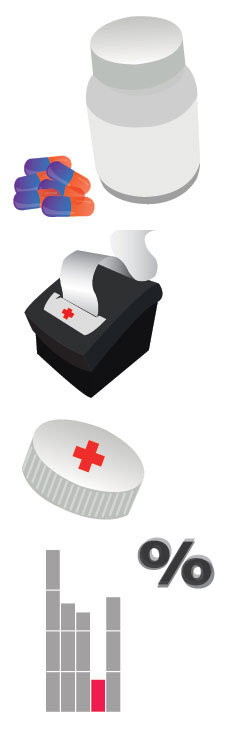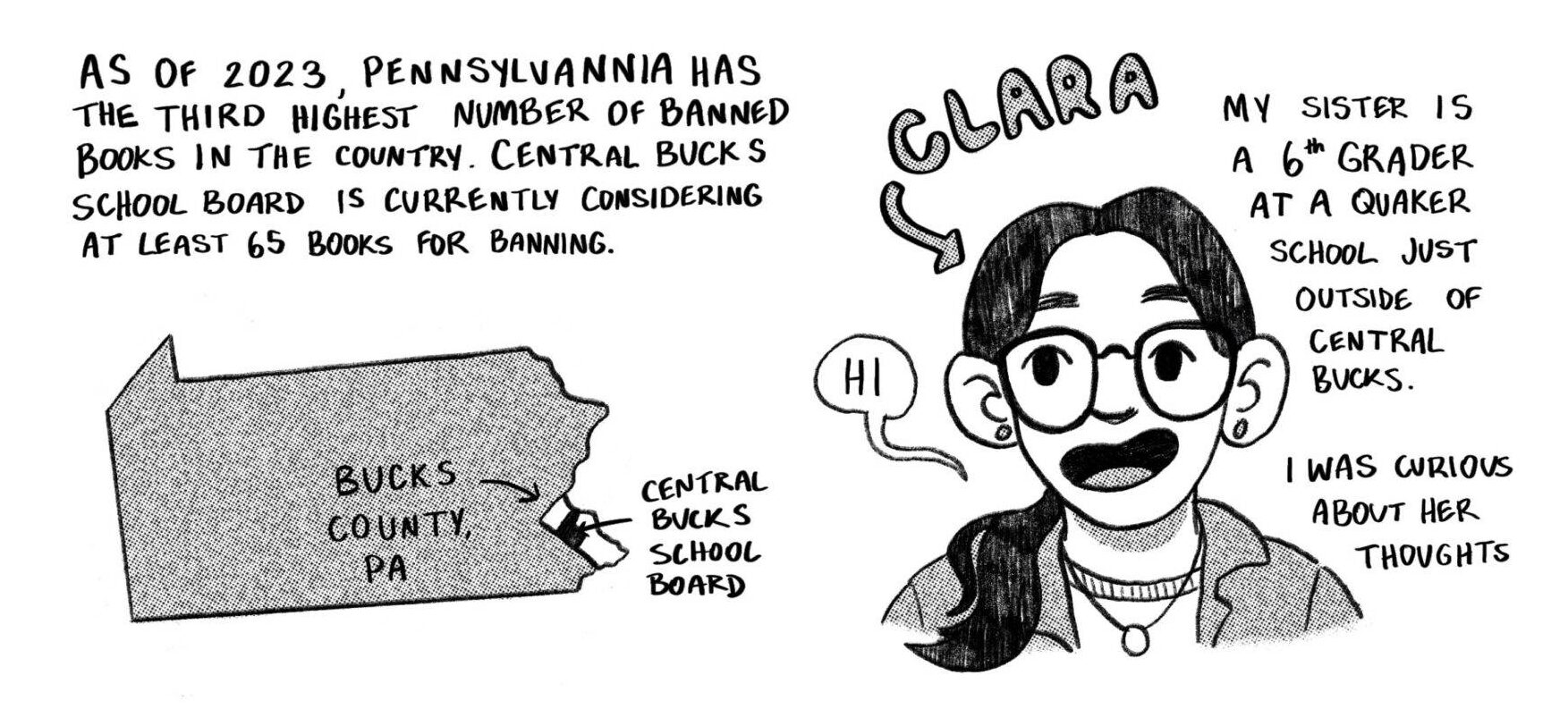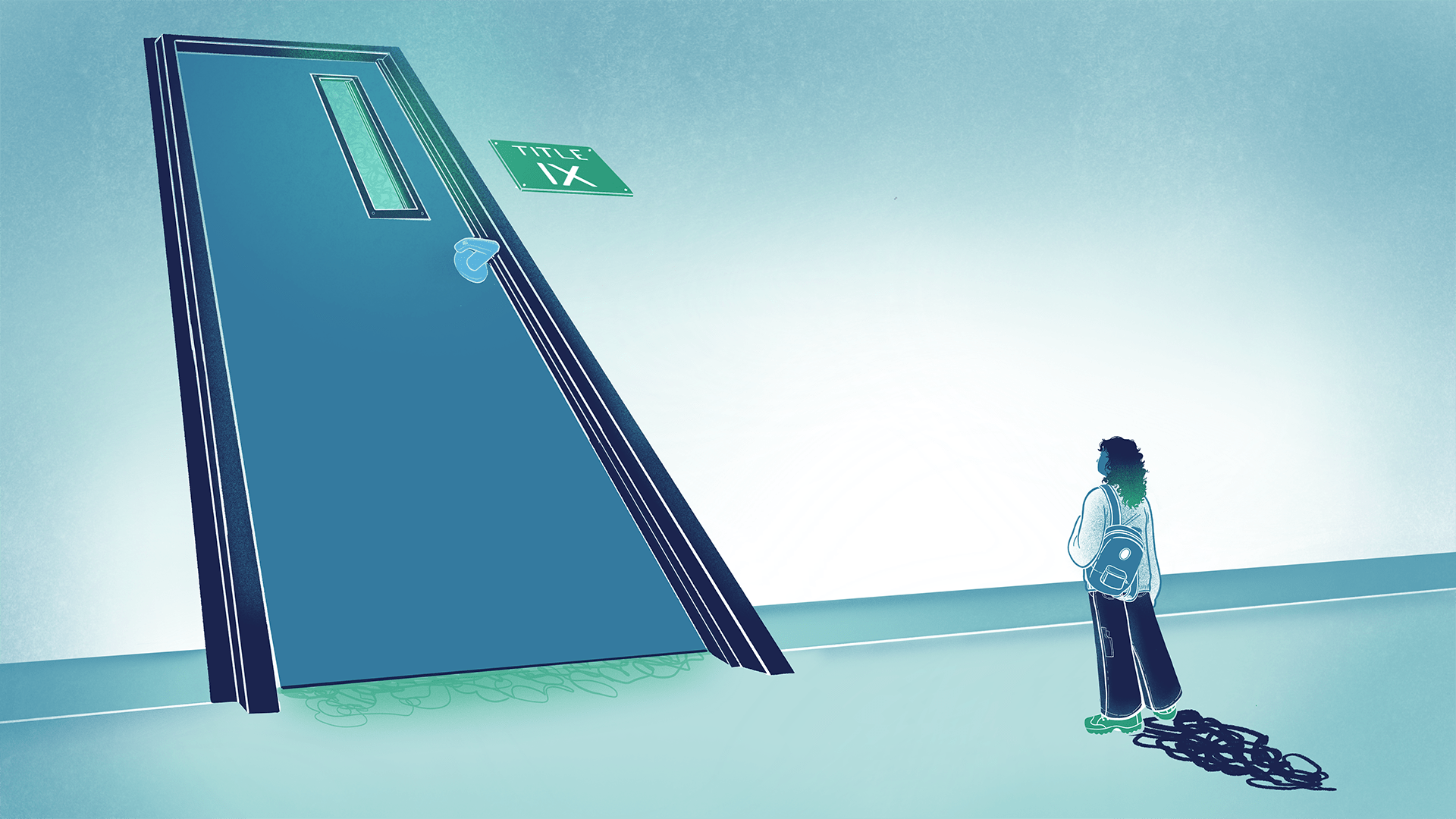SAIC Moves to New Student Loan Initiative
By Amanda Aldinger
Ilustrations by Jee In Park
 SAIC students will pay lower interested rates on federal student loans, one benefit of The Health Care and Education Reconciliation Act of 2010. The new loan program, the William D. Ford Federal Direct Loan Program, will eliminate private lenders as middlemen and channel the savings into more loans and an expansion of the Pell Grant program.
SAIC students will pay lower interested rates on federal student loans, one benefit of The Health Care and Education Reconciliation Act of 2010. The new loan program, the William D. Ford Federal Direct Loan Program, will eliminate private lenders as middlemen and channel the savings into more loans and an expansion of the Pell Grant program.
Patrick James, Director of Student Financial Services, explained the changes to F Newsmagazine, noting that “SAIC has had to make numerous changes to get ready for direct lending.. This includes establishing relationships and obtaining approvals with different government entities involved in processing Federal Direct Student loans, changes to the PeopleSoft system setup, and creating new communications for student and parents.”
On the whole, the new system will be much more effective. “The Student Financial Services office expects to deliver loan funds quicker to the student through the Federal Direct Loan program,” James said. The new bill simplifies the rather complicated FAFSA form. “The form itself was a real barrier to access to college, and by making it much more thoughtful, simpler … that’s already in place,” commented Secretary of Education Arne Duncan in a news briefing on March 30 to discuss the new bill.
 The elimination of fees that were previously paid to private banks will save nearly $68 billion over ten years. The savings will be used for student loans and increases in Pell Grants, need-based grants provided to undergraduate students that do not require repayment – making it easier for students to repay their loans after graduating. The White House estimates that with these savings, they will be able to provide 820,000 more Pell Grants by 2020, as President Obama has now doubled the amount for the grants.
The elimination of fees that were previously paid to private banks will save nearly $68 billion over ten years. The savings will be used for student loans and increases in Pell Grants, need-based grants provided to undergraduate students that do not require repayment – making it easier for students to repay their loans after graduating. The White House estimates that with these savings, they will be able to provide 820,000 more Pell Grants by 2020, as President Obama has now doubled the amount for the grants.
The availability of more grants is a huge positive, considering the amount that students are taking out in school loans is increasing steadily. “We have seen an increase over the past few years, which has happened for a few reasons. Many families, given the economy, have depleted portions of their savings that they had originally set aside for college tuition. In addition to that, the federal government has provided legislation that allows higher annual borrowing limits for freshman, sophomores, and graduate students,” James explained.
Although some have worried that these new rulings, as well as the government’s direct involvement in distributing loan money, will lead to tax hikes, Secretary Arne Duncan assures the public that this is not the case. “This is not asking taxpayers to subsidize anything. This is, frankly, simply removing subsidies to banks and putting those savings into education. It’s the only way as a country we’re going to build a long-term, vibrant economy. We have to invest to get there.”
With that in mind, the new bill has cushioned the blow of student loan repayment by reducing interest rates associated with loans. The new interest rates for the Federal Direct PLUS loans will now be 7.9 percent, instead of the 8.5 percent rate currently charged through the FFEL program. According to Secretary Duncan, “students who borrow money starting in July 2014 will be allowed to cap their repayments at 10 percent of their income above basic living requirements, instead of 15 percent. Moreover, if they keep up their payments, they will have any remaining debt forgiven after 20 years instead of 25 years – or after 10 years if they are in public service, such as teaching, nursing or serving in the military.”
In addition to the possibility of loan forgiveness, a new income-contingent repayment option has been created, which would give Federal Direct Stafford Loan Borrowers flexibility in their repayment plans to help alleviate undue financial hardship. This plan features specific requirements based on family size, income level and the total amount of student loans borrowed.
For Secretary Duncan, these new provisions, which make education more accessible to all individuals interested in receiving higher education, is a no-brainer. “We can either continue to subsidize banks, or we can invest in education. And we’re absolutely choosing to invest in education. The private sector is going to have a huge role to play in the servicing of these loans. Where they can keep default rates low, where they can build good relationships with individuals as well as the universities and the institutions, they have a great, great business opportunity to grow their work.”
Although the original amount allocated to this initiative was reduced after intense lobbying by loan companies, James assures students not to worry. “The Pell Grant program [has] grown given the state of the economy and more students qualifying for Pell Grants.”
According to President Obama, “In the United States of America, no one should go broke because they chose to go to college.” It’s safe to say that most SAIC students would agree.
If you’d like more information on the William D. Ford Federal Direct Loan Program, and what it means for you, contact Student Financial Services at 312.269.6600, or visit their office in the Sullivan Building, Suite 1218.





















